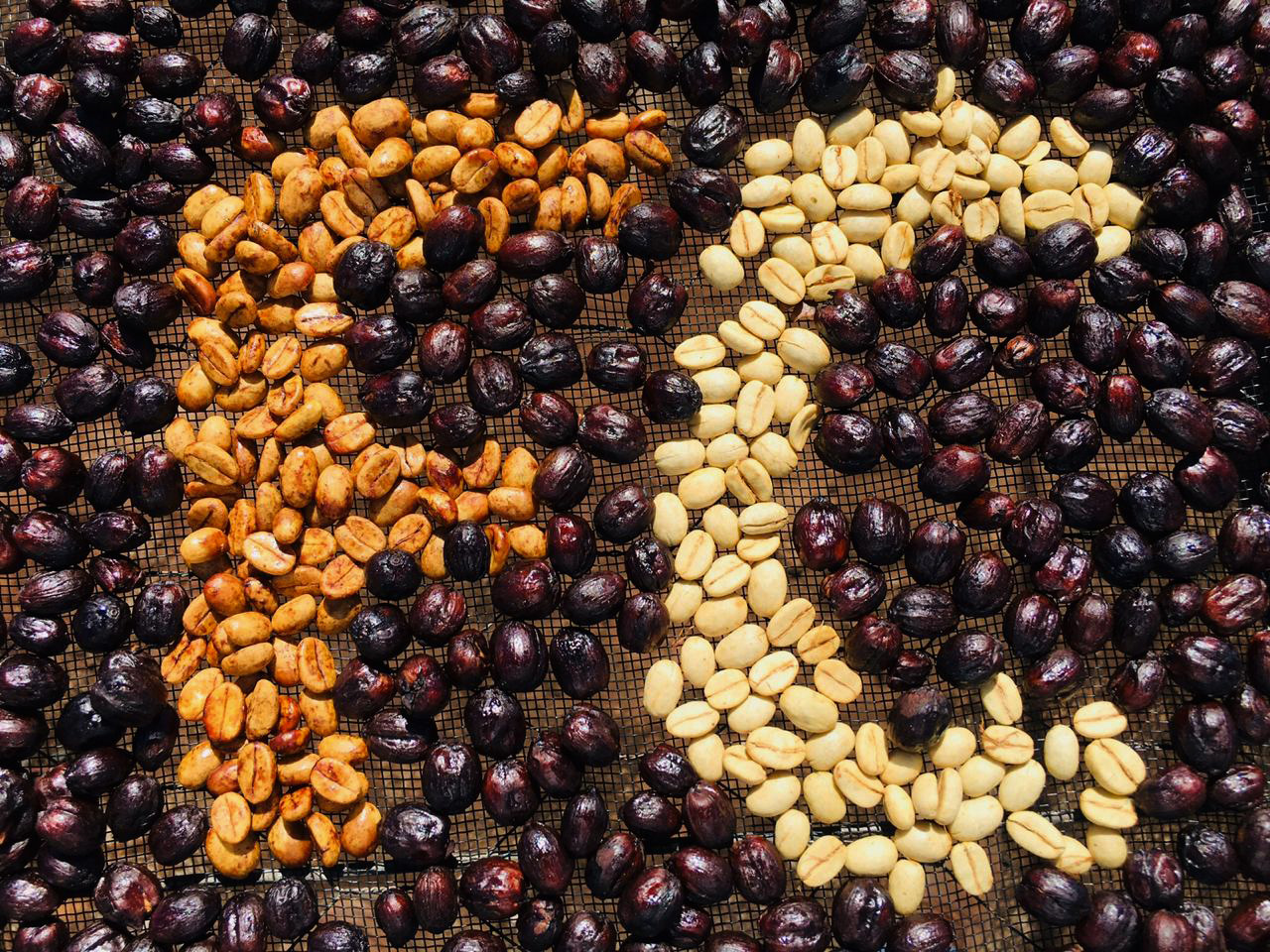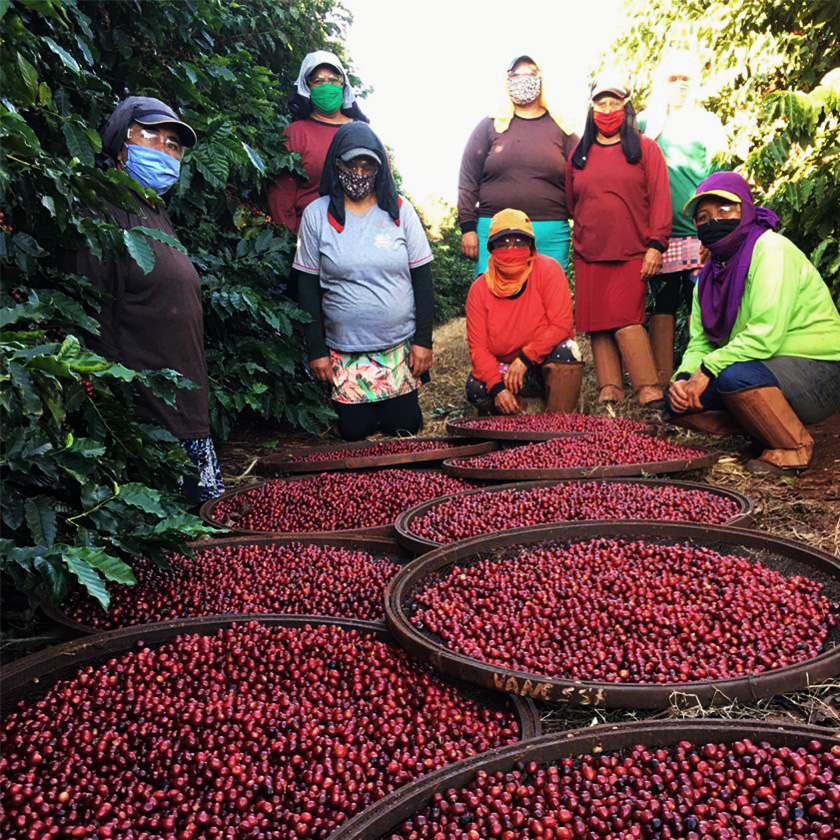Interview with Luiz Roberto Saldanha Rodrigues
To gain a perspective of life at the opposite end of the altitude spectrum, we spoke with Brazilian farmer and Q grader Luiz Roberto Saldanha Director of Coffee at Capricornio Coffees. His farm is called Fazenda California, located in the state of Parana, south of the Tropic of Capricorn. Parana was once the centre of Brazilian coffee farming, but as a consequence of severe frosts in this region in the 1970s and the resulting huge losses, production shifted northward, to an area centering around the state of Minas Gerais, a region less prone to frost.

Barista Hustle – What are the altitude range and latitude of Fazenda California?
Luiz Roberto Saldanha – The altitude range we have in Fazenda California is between 600 metres to 750 metres above sea level, and our latitude is 23.25° south.
BH – We understand that your region was once a big producer of coffee, but production shifted north after the ‘black frost’ of 1975. Is it your opinion that climate change has altered the climate of your state to make coffee farming safer from frost? (How do you guard against the possibility of frost?)
LRS – So from the second question. This is really hard [to answer]. There are different ways to approach it. One insight we can have about it is, 1975 was a really extreme climate event. We have registered other events that were even worse than 1975. For example, there was the frost of 1911 or -12, at the beginning of the century). The temperatures were much colder than 1975, but because there was not so much coffee planted at that time, the damage was not as destructive as it was [in 1975], because the problem is that you have coffee in a huge part of this state. It was the main exportation product for the country and for the state of Parana, and it was really devastating to the economy by being a tree that took a lot of time to be planted and start producing. It’s not like having an annual crop like soya bean or maize or wheat. That can have a frost. You lose, and you plant again. The investment for making coffee fields is really high. When you lose, it’s catastrophic, and the way the frost killed the trees was really catastrophic.
So, when we look at historical data, you see that they had several frosts. I will take a look [for] other registrations to share with you. Some were even worse than 1975, but in 1975 there was a huge amount of coffee planted.
The farm that we bought, Fazenda California, used to belong to an American group called Leon Anisio. I met with one of their old managers of the farm — one of the farm administrators — who told me they received a visit from some of the engineers that were involved in the building of the hydroelectric plant southwest of Parana. Because this is a giant plant, there is a massive huge lake…. These engineers were saying that because of this amount of water, this huge lake, the amount of water mass would probably change the way cold fronts came inside the state of Parana. Nowadays, when the cold fronts come from the south, they go to the west; they go to Argentina, Paraguay, even the Mato Grosso do Sul — that is a state of Brazil that is north of Parana. But because these cold fronts come to the lake, they go to the west because of the amount of water, and they do not come to the Norte Pioneiro de Panama, where we are located in Jacarasin.
Nowadays, when we see the winter in Brazil, it’s not uncommon to see cold fronts causing damage to High Mogiana, to South Minas, and not to Parana … because these cold fronts can come from the south, from the continent, and these ones are going to take the west side because of the huge … lake. Or, they can come through the ocean, and when they come through the ocean, [depending] on the angle, they will come to the continent, they will go to High Mogiana, South Minas, or even Sehab, like we had 3 years ago, and not come to Parana. Just being south is not necessarily increasing the … probability of heavy frost damage. That’s the point.
Some things can be [done] in order to avoid frost damage. The first one is using windbreakers, a barrier of trees that will block the cold wind, because this is one of the damages you have — the super-low temperature from the wind may cause damage. The second one you will need to avoid is weeds in the soil during the winter, because the sun heats the soil and then soil heats the air. So, if you have a lot of mulch, a lot of weeds, during the winter, you have a colder soil, and temperatures are going to drop much faster during the night — if it’s a frost night.
The other thing that works is increasing the salt concentration in the plants’ sap. We use spray carbonate of potassium aged 15 to 20 days during a winter, and this enables the plant to decrease the freezing point of the sap by 2 to 3 degrees [celsius]. It is really effective because most of the frosts are not really super-low temperatures. They will be around zero to -1, and a 1- or 2- or 3-degree decrease in the freezing point in the sap makes a huge difference. Another thing that can be used — but, in our case, because [our location] is really south, it’s a tricky one — is some trees in the field. The trees can block the infrared rays that will come from the soil into the air during the night. These will [work] like a cloud and will store this heat and will avoid the temperature decreasing super-fast, but on the other hand, if I had the trees blocking the sun during the day, this compensation is not 100 percent good.
Irrigation will be another one. If it’s a new or coffee trees, you can also increase the salt concentration. When the coffee trees are young — 1- or 2-year-old coffee trees — you can cover them with soil during the winter to protect them and avoid damage from the frost or the cold and then, during the spring, you take the soil from the top of the plants.
BH – The air pressure at Fazenda California is higher than on coffee farms at higher altitude. Are you aware of any changes in how coffee plants perform where they have more pressure and a thicker atmosphere surrounding them?
LRS – One of the impacts of the different air pressure: the thicker atmosphere surrounding the plants (or the thicker column of air) will make it harder for the beans to grow. Generally, lower altitudes with higher pressure have, as a result, softer beans. It’s much more difficult; so you see, the beans will have smaller screen [size] and lower [bean] density. The higher you go [in altitude], the higher the density of the beans. On the other hand, this higher pressure will give you a bigger concentration of carbon dioxide, which is really good for the plant vegetation, as you will have [more] vigorous plants.
BH – If we look at varieties such as geisha, growing at higher altitudes, it could be that some stress to the plant actually produces an improvement in coffee flavour. What do you think?
LRS – We need to have in mind the coffee origin centre … Ethiopia and Kenya. These coffees were taken first to Yemen, more or less 500 to 600 years before Christ, and they spent a lot of time in Yemen … in a kind of climate without shade, and [over time] these plants [became] different from the regional ones, so these plants can be planted in most part of the world. They still have some of their botanical and anatomical adaptations for partially shade grown, but we need to have in mind that these are not the original genetics of coffee any more.
On the other hand, when you take coffees like Geisha — still old, but they have a lot of this original genotype, same as other wild materials from Ethiopia — these ones need conditions closer to the ones they originate from: more shade, much lower temperatures that you can achieve with high altitudes. So, I would not say that it is the stress of the high altitude that will improve coffee flavour. I would say that it is the specific genotype [of geisha, for example] — that is a wild one — that would require a lot of conditions closer to its original environment. That would be my opinion….
BH – Are there certain varieties that perform better at lower altitudes?
LRS – It’s not just about altitude.… There is a direct correlation of higher altitude to better quality, but in fact, the higher altitude is not the cause of the quality. The cause of higher quality is, in fact, decreasing the temperature. The temperature [range] is the key point…. So [we need to have] two temperatures in mind when we are talking about arabica coffee: 12 degrees is considered a basal temperature for arabica coffee. If we go lower, the metabolism almost stops, and 22 degrees to 23 degrees would be the best temperature so the maximum net photosynthesis [can be] happening. But — thinking about how to decrease temperature — we can go higher and higher. Lower temperature: we need to understand [that the farther] we go from the equator line, the less altitude we need in order to decrease the temperature. Because of the inclination angle of the Earth, you receive much less energy during autumn and winter, during the [coffee cherry] maturation. [At Fazenda California], far from the equator line, lower temperatures will [occur] principally during autumn and winter.
Completely different from the equatorial zones, where the sun crosses the equator line twice a year in the autumn and the spring, this sun will cross the equator line. The south and the north … receive much more energy, and then you need to go higher to decrease the temperature and even block some ultraviolet rays with some shade; it depends where you are. So, having this is mind, it’s not about lower altitudes, it’s ‘where is this lower altitude’? So, a lower altitude near the Equator [for example] 600 metres in Columbia, is completely different from 600m at the Tropic of Capricorn or the Tropic of Cancer. So here [in Parana] the temperatures during maturation are quite low.
For our conditions, Mundo Novo goes really well, Catuai, Obata … nowadays we have Arara — that’s a new variety from Brazil. And there are some Brazilian farmers that are bringing some different materials [hybrids]. Brazil has a strict political restriction against foreigners’ coffee materials, and the access is really tough, so we are [reliant on] Brazilian [-bred coffee plant] genetics. One of the reasons is to protect Brazilian genetics from contamination with plagues or diseases that may be imported from other countries. Basically, it’s not about varieties for lower altitudes; it’s adapting in order that this variety can have the right amount of time and the right amount of energy in order to have the maturation of the beans with a good thermic amplitude, in order that you have net photosynthesis during the day and a low temperature during the night to decrease metabolism in storage sugars and organic acids. So, this is the point to understanding where you are — the interaction between altitude and latitude — and then we are going to [select an appropriate plant] variety to have the maturation in this period of the year, to have the best conditions for the maturation and the harvest.
BH – If coffee farmers were to relocate from Minas Gerais down to Parana, what, if anything would they need to change about the way they farm?
LRS – Parana has a climate that is classified as subtropical. Subtropical for us means that we have four seasons — different from equatorial zones or tropical climates, where you have six months of raining and six months of the dry season. In Parana, because it’s a subtropical climate, we have rains almost all year. During the harvest and post harvest, it’s similar to some highlands from Central America, with super-low temperatures, a lot of moisture, and cloudy days. A huge difference is Parana during spring flowering periods — we have a huge thermic amplitude and a lot of wind. This is a transitional season and, as we are close to the south, we receive a huge amount of winds; this is a behaviour [typically characteristic of the] mountains. Mountains in Brazil, highlands in Brazil, highlands of Central America — they have this big thermic amplitude and a lot of wind, and there is a huge amount of disease during the flowering period. So these need completely different farming techniques. Then, when we come to the summer, we have a lot of energy, a lot of rain, and bigger temperatures, and then [the climate] behaves like [that of] lower lands, a kind of tropical climate. It’s really good for the vegetation period. But this [requires] a lot of technical, professional management on nutrition, plague and disease management, and weed management.
Then, when we come to the Autumn — the maturation — we need to keep in mind that our harvest will be made in the middle of some rains, preserving this area; preserving the bean structure and the cascara; by increasing the nutritional levels of calcium and borem; for the integrity of the cell walls and avoiding bad fermentation. Leaf area to avoid the impact of the rains the management of the fruit fly, of la broca, of the mite because whatever damage you have in the cascara [and] you have the rains, this is going to open the gate for bad fermentation and for diseases. You need to have an intense care of the fruit in order to have perfect cherries during maturation. And, during harvest and post harvest, knowing that your window is super-short, you need to have selective picking several times to ensure the biggest amount of cherries. You need to have post-harvest techniques, knowing temperatures are low. It’s wet. It’s super-hard for drying, and you need to have a really good infrastructure on wet mill and drying to ensure high-quality coffees. So, it’s a challenging environment with huge potential, but one that needs a lot of adaptation and professional management.
Pictures: Luiz Roberto Saldanha and his family.



